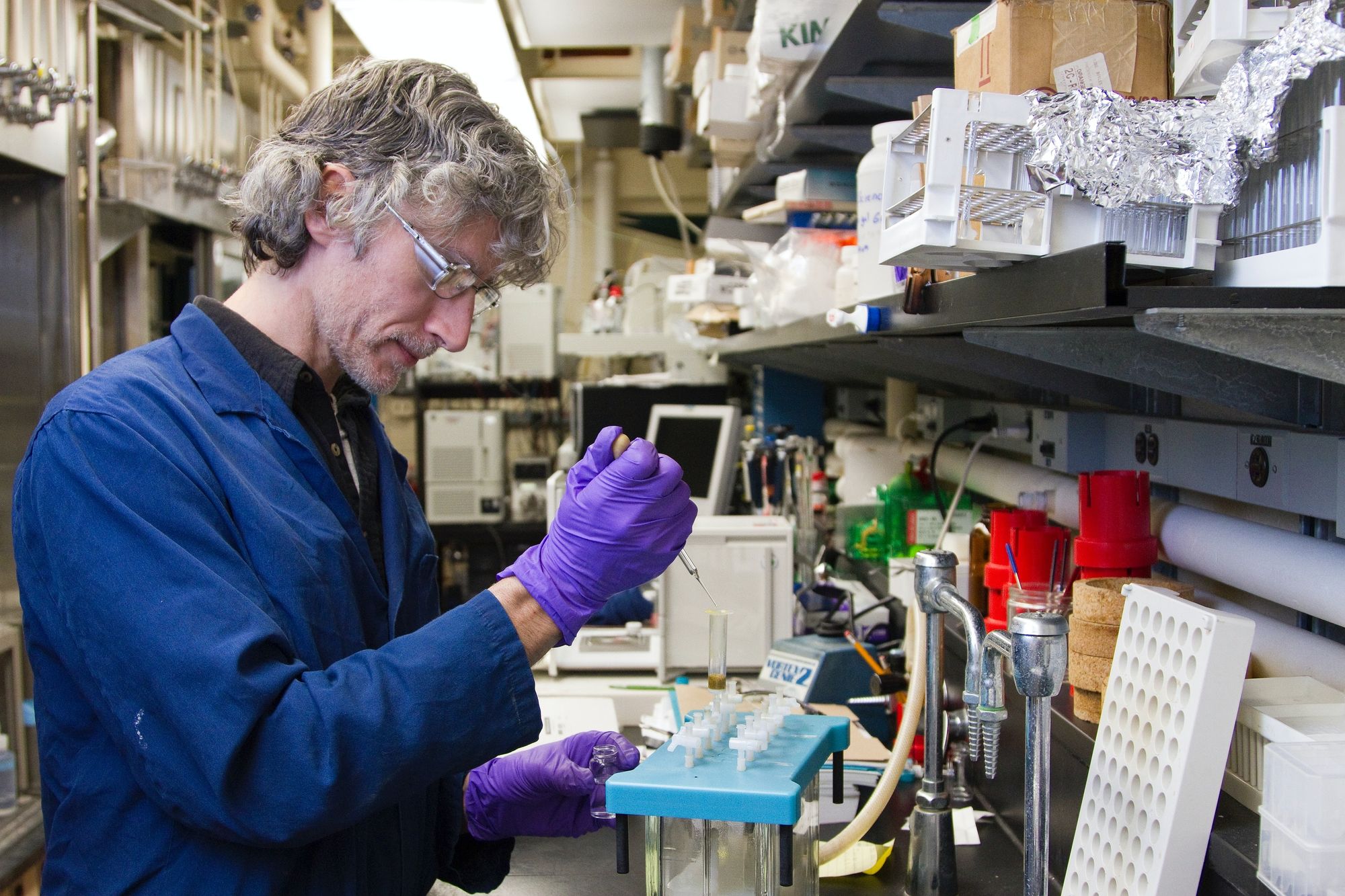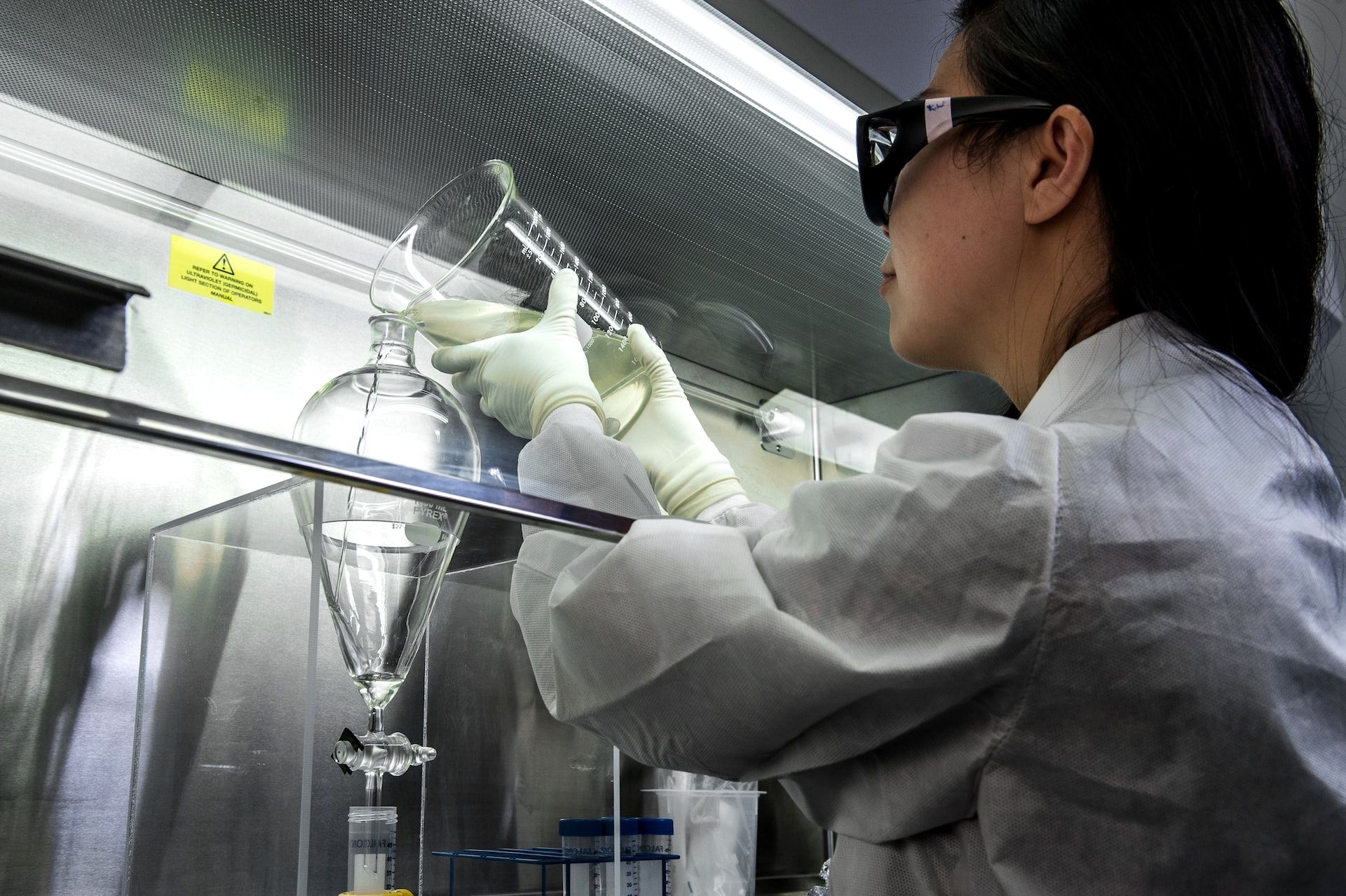The global carbon footprint is the total greenhouse gas emissions from an individual or organization, measured in metric tonnes of CO2 equivalent. According to United Nations data, the world’s biggest polluters are energy companies. However, there are also many chemical companies that produce greenhouse gases.
Chemical manufacturers play a critical role in the global economy, providing essential raw materials for a vast array of products and industries. However, the production of chemicals is a highly energy-intensive process that often results in significant carbon emissions.
With growing concerns about climate change, it is essential for chemical manufacturers to take action to reduce their carbon footprint.
A company’s carbon footprint can be reduced by adopting green manufacturing practices. This includes creating less waste, using renewable energy sources, and reducing emissions from production. Chemical manufacturers can start by taking a look at their own operations and making changes where possible.
In this article, we will explore the various ways in which chemical manufacturers can reduce their carbon footprint. Let’s take a look at the table of content below:
- Carbon Emissions due to Chemical Manufacturing
- Why is it Crucial for Reducing Carbon Emissions?
- Importance of Reducing Carbon Footprint in the Chemical Manufacturing Industry
- How can Chemical Manufacturers Measure their Carbon Footprint?
- Strategies that Chemical Manufacturers can Implement to Reduce their Carbon Footprint
- Use of Renewable Energy Sources
- Implementation of Sustainable Materials
- Frequently Asked Questions (FAQs) Associated with Chemical Manufacturers Reducing Carbon Footprint
- Wrapping Up
- How Deskera Can Assist You?
Let's get started!
Carbon Emissions due to Chemical Manufacturing
Carbon emissions due to chemical manufacturing refer to the release of carbon dioxide (CO2) and other greenhouse gases into the atmosphere during the production of chemicals such as plastics, fertilizers, and pharmaceuticals.
Chemical manufacturing involves a variety of processes, including reactions between raw materials and the use of energy sources such as natural gas, coal, or oil. The burning of these fuels releases carbon dioxide, as well as other greenhouse gases such as methane and nitrous oxide, into the atmosphere.

In addition to direct emissions from energy use, chemical manufacturing can also result in indirect emissions from the production and transportation of raw materials, as well as the disposal of waste products.
Overall, carbon emissions from chemical manufacturing contribute to climate change and global warming, and efforts to reduce these emissions are an important aspect of addressing the environmental impact of the industry.
Why is it Crucial for Reducing Carbon Emissions?
There are several reasons why it is important to start reducing carbon emissions now:
Climate Change:
Carbon emissions are the primary cause of climate change, which is one of the greatest challenges facing humanity today. Climate change is leading to more frequent and severe weather events, rising sea levels, and other environmental disruptions that have significant economic and social impacts.
Environmental Degradation:
Carbon emissions contribute to other forms of environmental degradation, such as air and water pollution, deforestation, and loss of biodiversity. These environmental issues can have significant health and economic impacts, particularly in vulnerable communities.
Regulatory Requirements:
Many governments around the world are implementing regulatory requirements for companies to reduce their carbon emissions. Companies that do not take action to reduce their emissions may face financial penalties or other consequences.
Consumer Demand:
Consumers are increasingly demanding environmentally-friendly products and services. Companies that do not take action to reduce their carbon emissions may risk losing market share to competitors who have implemented sustainable practices.
Business Opportunities:
There are also business opportunities associated with reducing carbon emissions. Companies that implement sustainable practices and develop innovative solutions to reduce emissions can create new markets and differentiate themselves from competitors.
Therefore, reducing carbon emissions is important for mitigating the impacts of climate change, protecting the environment, complying with regulatory requirements, meeting consumer demands, and seizing business opportunities. It is important to take action now to reduce emissions and create a more sustainable model future.
Importance of Reducing Carbon Footprint in the Chemical Manufacturing Industry
The chemical manufacturing industry is a significant contributor to global greenhouse gas emissions, with a carbon footprint that encompasses the production of raw materials, energy consumption during manufacturing, and transportation of finished products.
The environmental impact of the chemical industry is further compounded by the fact that many of its products are used in energy-intensive sectors such as transportation, construction, and agriculture.
Reducing the carbon footprint of the chemical industry is critical for mitigating the effects of climate change. The continued increase in atmospheric carbon dioxide levels is leading to global warming, melting of ice caps, rising sea levels, and increased frequency of extreme weather events.
Furthermore, it is essential to reduce the amount of greenhouse gases emitted into the atmosphere to prevent further damage to the environment and protect the well-being of current and future generations.
Moreover, reducing carbon footprint in the chemical manufacturing industry can lead to several economic benefits. As energy costs continue to rise, implementing energy efficiency measures and renewable energy sources can result in significant cost savings.
Additionally, with the increasing awareness and demand for sustainable products, chemical manufacturers who adopt sustainable practices can gain a competitive advantage in the market.
Furthermore, reducing carbon footprint in the chemical manufacturing industry can also lead to improvements in public health. The release of pollutants during manufacturing processes can cause respiratory problems and other health issues for workers and nearby communities. By reducing emissions and implementing sustainable practices, chemical manufacturers can improve air quality and reduce the risk of negative health impacts.
Therefore, reducing the carbon footprint of the chemical manufacturing industry is crucial for mitigating the effects of climate change, gaining economic benefits, and improving public health. It is essential for chemical manufacturers to take a proactive approach in implementing sustainable practices and reducing their carbon footprint to help protect the environment and ensure a sustainable future.
How can Chemical Manufacturers Measure their Carbon Footprint?
Chemical manufacturers can measure their carbon footprint by following these steps:
Determine the Boundaries:
Identify the scope of the carbon footprint, i.e., the activities that will be included in the calculation. For chemical manufacturers, this may include the production process, energy use, transportation, and waste management.
Collect Data:
Collect data on the energy consumption, fuel use, and greenhouse gas (GHG) emissions associated with the identified activities. This data can be obtained from energy bills, production records, and other sources.
Calculate Emissions:
Calculate the emissions associated with each activity using standard emissions factors. Emissions factors are values that represent the amount of greenhouse gas emissions generated per unit of activity.
Analyze the Results:
Analyze the results of the carbon footprint calculation to identify areas where emissions can be reduced. This analysis can help chemical manufacturers identify opportunities to reduce energy use, switch to renewable energy sources, or improve waste management practices.
Report and Communicate:
Report the carbon footprint results to stakeholders, including customers, investors, and employees. Communicate the actions being taken to reduce emissions and improve sustainability practices.
There are also several carbon footprint calculators available online that can help chemical manufacturers measure their carbon footprint. These calculators typically require input on energy use, fuel consumption, and other activities and provide an estimate of the carbon footprint.
However, it's important to note that these calculators are not always tailored to the specific activities of a chemical manufacturer, so it may be necessary to conduct a more detailed analysis to get an accurate estimate.
Strategies that Chemical Manufacturers can Implement to Reduce their Carbon Footprint
Chemical manufacturers can implement several strategies to reduce their carbon footprint, including:
Use of Renewable Energy Sources:
One of the primary ways to reduce carbon emissions in the chemical manufacturing industry is to shift to renewable energy sources such as solar, wind, and hydropower.

Renewable energy sources can be used to power manufacturing processes, reducing the reliance on fossil fuels and reducing carbon emissions. In addition, chemical manufacturers can install on-site renewable energy systems to reduce their reliance on the grid and further reduce their carbon footprint.
Adoption of Energy Efficiency Measures:
Chemical manufacturers can adopt energy efficiency measures to reduce the amount of energy required to manufacture chemicals. This further can be achieved through a variety of approaches. It includes process optimization, waste heat recovery, and upgrading equipment to more energy-efficient models.
Furthermore, energy efficiency measures not only reduce carbon emissions but can also result in cost savings.
Implementation of Sustainable Materials:
Chemical manufacturers can reduce their carbon footprint by implementing sustainable materials in their manufacturing processes. This can include the use of biodegradable, non-toxic materials, and the incorporation of recycled materials in the production process.
Moreover, sustainable materials can help reduce carbon emissions by reducing the need for new raw materials and reducing waste.
Implementation of Carbon Capture and Storage (CCS):
Chemical manufacturers can implement CCS technologies to capture carbon dioxide emissions from manufacturing processes and store them underground. This approach can help reduce the amount of carbon dioxide released into the atmosphere and help mitigate the effects of climate change.
Implementation of Circular Economy Models:
Chemical manufacturers can adopt circular economy models, which focus on reducing waste and maximizing the use of resources. This approach can involve the reuse of materials and products, the recycling of waste, and the recovery of energy from waste. By implementing circular economy models, chemical manufacturers can reduce their carbon footprint while also realizing economic benefits.
Ultimately, chemical manufacturers can reduce their carbon footprint by adopting strategies such as the use of renewable energy sources, adoption of energy efficiency measures, implementation of sustainable materials, implementation of CCS technologies, and adoption of circular economy models.
By implementing these strategies, chemical manufacturers can contribute to a more sustainable future and help mitigate the effects of climate change.
Use of Renewable Energy Sources
The use of renewable energy sources is a crucial strategy for reducing the carbon footprint of the chemical manufacturing industry.
Renewable energy sources, such as solar, wind, and hydropower, generate energy without emitting greenhouse gases, making them an environmentally friendly alternative to fossil fuels.
By shifting to renewable energy sources, chemical manufacturers can reduce their reliance on fossil fuels, decrease their carbon emissions, and contribute to the global effort to combat climate change.
(A) How Renewable Energy Sources Can be Used to Power Chemical Manufacturing Processes?
Renewable energy sources, such as solar, wind, and hydropower, can be used to power various chemical manufacturing processes.
Solar energy, for instance, can be harnessed by installing solar panels on-site to generate electricity that can power equipment and machinery. Wind energy can be captured by installing wind turbines on-site or by purchasing wind power from nearby wind farms.
Hydropower, on the other hand, can be generated by installing turbines in nearby rivers or by purchasing hydropower from nearby power plants.
In addition, chemical manufacturers can purchase renewable energy from off-site sources, such as wind or solar farms, to power their manufacturing processes.
By shifting to renewable energy sources, chemical manufacturers can reduce their reliance on fossil fuels, decrease their carbon emissions, and contribute to a more sustainable future.
Moreover, it is essential for chemical manufacturers to explore and adopt renewable energy sources in their manufacturing processes as part of their efforts to reduce their carbon footprint.
(B) Different Types of Renewable Energy Sources that can be Used in Chemical Manufacturing
Renewable energy sources such as solar, wind, and hydropower can be used to power chemical manufacturing processes in various ways. Here are some examples:
Solar Power:
Chemical manufacturers can install solar panels on-site to generate electricity for their manufacturing processes. Solar panels can be installed on rooftops or in large fields, and the electricity generated can be used to power equipment and machinery.
In addition, excess electricity generated can be stored in batteries or sold back to the grid. Solar power can be an effective way to reduce reliance on fossil fuels and reduce carbon emissions.
Wind Power:
Chemical manufacturers can also harness wind power by installing wind turbines on-site or purchasing wind power from nearby wind farms. Wind turbines generate electricity by using the power of the wind to turn blades, which then powers a generator. This electricity can be used to power manufacturing processes, reducing reliance on fossil fuels and reducing carbon emissions.
Hydropower:
Chemical manufacturers can also use hydropower to generate electricity for their manufacturing processes. Hydropower plants generate electricity by using the energy of falling water to turn turbines, which powers a generator.
Furthermore, chemical manufacturers can use hydropower by installing turbines in nearby rivers or by purchasing hydropower from nearby power plants.
In addition to these methods, chemical manufacturers can also purchase renewable energy from off-site sources, such as wind or solar farms, to power their manufacturing processes. This approach can provide a reliable source of renewable energy without requiring significant capital investments in on-site renewable energy systems.
All in all, the use of renewable energy sources can help chemical manufacturers reduce their reliance on fossil fuels, decrease their carbon emissions, and contribute to a more sustainable future. It is important for chemical manufacturers to explore and adopt renewable energy sources in their manufacturing processes as part of their efforts to reduce their carbon footprint.
(C) Case Studies of Chemical Manufacturers Who Have Successfully Adopted Energy Efficiency Measures
There are several chemical manufacturers who have successfully integrated renewable energy sources into their manufacturing processes, including:
Dow Chemical: Dow Chemical has set a goal to reduce its net annual carbon emissions by 5 million metric tons by 2030. To achieve this goal, the company has invested in renewable energy sources, such as wind and solar power.
Dow Chemical has installed a 200-megawatt wind farm in Texas, which provides enough energy to power its Freeport, Texas manufacturing plant. The company has also installed a 6-megawatt solar array at its Midland, Michigan manufacturing site, which produces enough energy to power 400 homes.
BASF: BASF, the largest chemical producer in the world, has set a goal to source 22% of its energy from renewable sources by 2025. To achieve this goal, the company has invested in wind and solar power. BASF has installed a 21-megawatt wind farm in Texas, which provides enough energy to power its nearby manufacturing facilities. The company has also installed a 2.9-megawatt solar array at its manufacturing site in Mauldin, South Carolina.
Clariant: Clariant, a specialty chemical manufacturer, has set a goal to reduce its greenhouse gas emissions by 40% by 2025. To achieve this goal, the company has invested in renewable energy sources, such as wind and solar power. Clariant has installed a 2.4-megawatt solar array at its manufacturing site in Louisville, Kentucky, which provides enough energy to power 200 homes. The company has also signed a power purchase agreement with a wind farm in Texas, which provides enough energy to power its manufacturing sites in the United States.
These case studies demonstrate that chemical manufacturers can successfully integrate renewable energy sources into their manufacturing processes, reduce their reliance on fossil fuels, and decrease their carbon emissions. By adopting renewable energy sources, chemical manufacturers can contribute to a more sustainable future and help combat climate change.
Implementation of Sustainable Materials
The implementation of sustainable materials in chemical manufacturing is an important aspect of creating a more environmentally-friendly industry.
Chemical manufacturing involves the production of a wide range of materials, from plastics to fertilizers, which can have a significant impact on the environment.
The use of sustainable materials can help to reduce the environmental impact of chemical manufacturing by promoting the use of materials that are renewable, recyclable, and biodegradable.
In recent years, there has been a growing trend towards the use of sustainable materials in chemical manufacturing, as companies recognize the importance of reducing their environmental footprint and the potential economic benefits of adopting sustainable practices.
(A) How Sustainable Materials Can be Used to Reduce the Carbon Footprint of Chemical Manufacturing?
Sustainable materials can be used to reduce the carbon footprint of chemical manufacturing in several ways.
First, sustainable materials can be sourced from renewable sources, such as biomass, which can help to reduce the reliance on fossil fuels. Biomass-based materials can be converted into a variety of products, including bioplastics, biofuels, and biochemicals, which can be used as substitutes for petroleum-based products.
Second, sustainable materials can be designed to be recyclable, which can reduce the amount of waste produced during the manufacturing process. For example, some types of biodegradable plastics can be recycled and used to create new products, which can help to reduce the environmental impact of plastic waste.
Third, the use of sustainable materials can lead to more efficient manufacturing processes. For instance, some sustainable materials can be produced using less energy and fewer resources compared to traditional materials. This can lead to lower energy consumption, reduced emissions, and cost savings.
Finally, the use of sustainable materials can also help to reduce the carbon footprint of chemical manufacturing by promoting circular economy practices. Circular economy principles encourage the reuse and recycling of materials, reducing the need for new materials to be produced. This can help to conserve natural resources and reduce the environmental impact of chemical manufacturing.
Overall, the use of sustainable materials can play a critical role in reducing the carbon footprint of chemical manufacturing, promoting a more sustainable and environmentally-friendly industry.
(B) Different Types of Sustainable Materials that can be Used in Chemical Manufacturing
There are several types of sustainable materials that can be used for chemical manufacturing, including:
Bioplastics: Bioplastics are a type of plastic made from renewable sources, such as plant starches, instead of petroleum. Bioplastics can be used to make a wide range of products, from food packaging to medical equipment.
Biomass-based chemicals: Biomass-based chemicals are chemicals produced from renewable sources, such as agricultural waste or algae. These chemicals can be used to make a variety of products, including adhesives, solvents, and resins.
Recyclable materials: Recyclable materials, such as glass, aluminum, and certain types of plastic, can be used in chemical manufacturing to reduce the amount of waste produced. By designing products to be recyclable and using recycled materials, companies can reduce their environmental footprint and promote a circular economy.
Bio-based feedstocks: Bio-based feedstocks are renewable materials that can be used to produce chemicals and materials. These feedstocks can be sourced from agricultural waste, forestry waste, or other renewable sources.
Sustainable fibers: Sustainable fibers, such as bamboo, hemp, and organic cotton, can be used to make textiles and other products. These fibers are renewable and biodegradable, making them more environmentally-friendly than traditional synthetic fibers.
So, the use of sustainable materials in chemical manufacturing is an important way to reduce the environmental impact of the industry and promote a more sustainable future. By adopting sustainable practices and using renewable materials, chemical manufacturers can help to create a more circular and environmentally-friendly economy.
(C) Case Studies of Chemical Manufacturers who have Successfully Implemented Sustainable Materials in their Manufacturing Processes
There are several chemical manufacturers that have successfully implemented sustainable materials in their manufacturing processes. Here are a few examples:
DuPont: DuPont has been using bioplastics made from renewable sources, such as corn and sugar, to create a range of products, including automotive components, packaging, and textiles. The company has also implemented recycling programs to reduce waste and promote a circular economy.
DSM: DSM has developed a range of sustainable materials, including bioplastics and bio-based feedstocks, which it uses to create a variety of products, from automotive parts to medical equipment. The company has also implemented a sustainable sourcing program to ensure that its materials are sourced from responsible and renewable sources.
Braskem: Braskem is a Brazilian chemical manufacturer that has been using sugarcane ethanol to produce bioplastics since 2010. The company's Green PE bioplastics are 100% renewable and can be recycled along with traditional polyethylene.
Interface: Interface, a carpet tile manufacturer, has implemented a closed-loop recycling program for its products. The company collects used carpet tiles from customers, recycles the materials, and uses them to create new products.
All in all, these case studies demonstrate the potential for chemical manufacturers to reduce their environmental footprint and create a more sustainable industry by implementing sustainable materials and practices. By using renewable materials and promoting circular economy principles, chemical manufacturers can help to reduce waste, conserve natural resources, and promote a more sustainable future.
Frequently Asked Questions (FAQs) Associated with Chemical Manufacturers Reducing Carbon Footprint
Here are some FAQs associated with chemical manufacturers reducing their carbon footprint:
Que 1: What are some strategies that chemical manufacturers can use to reduce their carbon footprint?
Ans: Chemical manufacturers can reduce their carbon footprint by implementing renewable energy sources, using sustainable materials, improving energy efficiency, and implementing circular economy practices.
Que 2: Why is it important for chemical manufacturers to reduce their carbon footprint?
Ans: Reducing carbon emissions is important for mitigating the impacts of climate change, protecting the environment, complying with regulatory requirements, meeting consumer demands, and seizing business opportunities.
Que 3: What are some challenges associated with implementing sustainable practices in chemical manufacturing?
Ans: Some challenges associated with implementing sustainable practices in chemical manufacturing include high upfront costs, technological limitations, and supply chain complexity.
Que 4: Are there any regulatory requirements for chemical manufacturers to reduce their carbon footprint?
Ans: Many governments around the world have implemented regulatory requirements for companies to reduce their carbon emissions. Companies that do not take action to reduce their emissions may face financial penalties or other consequences.
Wrapping Up
In conclusion, chemical manufacturers have a crucial role to play in reducing global greenhouse gas emissions and mitigating climate change. The adoption of sustainable and environmentally responsible practices is not only a moral imperative but also makes good business sense in today's world.
By setting ambitious targets and using renewable energy sources, more sustainable feedstocks and processes, and adopting circular economy principles, chemical manufacturers can significantly reduce their carbon footprint.
Moreover, by doing so, they can reduce their operating costs, enhance their brand image, and increase their competitiveness in a rapidly changing business landscape.
Ultimately, the success of these efforts will require a collaborative approach involving all stakeholders, including manufacturers, governments, consumers, and investors, working together to create a sustainable future for generations to come.
How Deskera Can Assist You?
Deskera's integrated financial planning tools allow investors to better plan their investments and track their progress. It can help investors make decisions faster and more accurately.

Deskera Books enables you to manage your accounts and finances more effectively. Maintain sound accounting practices by automating accounting operations such as billing, invoicing, and payment processing.
Deskera CRM is a strong solution that manages your sales and assists you in closing agreements quickly. It not only allows you to do critical duties such as lead generation via email, but it also provides you with a comprehensive view of your sales funnel.
Deskera People is a simple tool for taking control of your human resource management functions. The technology not only speeds up payroll processing but also allows you to manage all other activities such as overtime, benefits, bonuses, training programs, and much more. This is your chance to grow your business, increase earnings, and improve the efficiency of the entire production process.
Final Takeaways
We've arrived at the last section of this guide. Let's have a look at some of the most important points to remember:
- The chemical manufacturing industry is a significant contributor to global greenhouse gas emissions, with a carbon footprint that encompasses the production of raw materials, energy consumption during manufacturing, and transportation of finished products.
- Calculate the emissions associated with each activity using standard emissions factors. Emissions factors are values that represent the amount of greenhouse gas emissions generated per unit of activity.
- One of the primary ways to reduce carbon emissions in the chemical manufacturing industry is to shift to renewable energy sources such as solar, wind, and hydropower. Renewable energy sources can be used to power manufacturing processes, reducing the reliance on fossil fuels and reducing carbon emissions.
- Chemical manufacturers can reduce their carbon footprint by implementing sustainable materials in their manufacturing processes. This can include the use of biodegradable, non-toxic materials, and the incorporation of recycled materials in the production process. Sustainable materials can help reduce carbon emissions by reducing the need for new raw materials and reducing waste.
- Chemical manufacturers can adopt circular economy models, which focus on reducing waste and maximizing the use of resources. This approach can involve the reuse of materials and products, the recycling of waste, and the recovery of energy from waste. By implementing circular economy models, chemical manufacturers can reduce their carbon footprint while also realizing economic benefits.
- Sustainable materials can be sourced from renewable sources, such as biomass, which can help to reduce the reliance on fossil fuels. Biomass-based materials can be converted into a variety of products, including bioplastics, biofuels, and biochemicals, which can be used as substitutes for petroleum-based products.
- Sustainable fibers, such as bamboo, hemp, and organic cotton, can be used to make textiles and other products. These fibers are renewable and biodegradable, making them more environmentally-friendly than traditional synthetic fibers.
Related Articles













